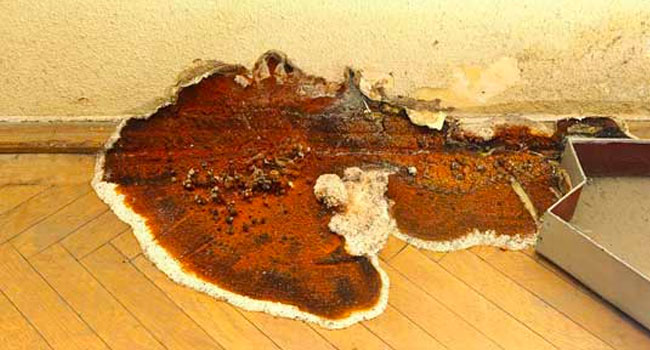Dry Rot Treatments
Experts in Dry Rot Treatments Manchester
We offer a wide range of Dry Rot treatments in Manchester, Lancashire and the Northwest.
Dry rot is an aggressive kind of fungal development that can trigger serious timber decay and weaken structural timber in buildings. We have defined some helpful advice to assist you determine the early indications of dry rot, comprehend what triggers it, and how to act quickly to repair any damage.
Fortunately, a treatment program performed by a knowledgeable and competent expert can fix or change afflicted damp timber and get rid of the issue. The earlier you can identify dry rot the easier and more cost-effective solving it becomes. You can book a wood rot survey by getting in contact with one of our specialists.
How to identify Dry Rot in your property
Rot spore dust
Spores are very common and usually harmless. However, if fungal spores start to appear in concentrated patches of rust coloured dust, this is a sure sign of an active problem.
Damaged & discoloured timber
Timber affected by dry rot will often darken in colour and will become so dry and brittle it will break or crumble easily. Timber affected by dry rot will also have distinct “cuboidal cracking.”
Hyphae
Spores begin to produce hyphae when they come into contact with timber in damp and humid conditions. Hyphae are white/grey strands that look similar to spider silk.
Mycelium
Mycelium is a grey/white cotton-wool-like mass that dry rot produces when it spreads from timber it can no longer feed on. If you identify dry rot mycelium it is vital that you treat the problem there and then as it is likely to get a lot worse.
Mushroom style fungus
The last stage in the dry rot lifecycle is the most visually striking – the mushroom-like fruiting body. These fleshy masses of fungus look like large rust-coloured mushrooms and they grow when dry rot needs to pump fresh spores into the air to find more timber.
![]()
“Really professional nothing was to much trouble. Thanks again Kev”
Paul Taylor
![]()
“Excellent service, very professional & would highly recommend”
Samantha Stephens
Contact us
For more information or to receive a survey on your property please get in touch and we will be happy to discuss your requirements.
Phone
Address
Unit 12 Stopes Garage, Stopes Road, Little Lever, Bolton, BL3 1NP
What causes dry rot?
Dry rot happens when air-borne spores enter in to contact with damp wood that has a wetness content of over 20%. These spores then sprout and sprout grey root hyphae hairs. The hyphae grow into mycelium which covers the wood in a thick cotton-wool like compound. The fungi consumes the wood and draws the moisture from it, leaving it deteriorated. The fungus then advances into a fruiting body known as sporophore which sprouts more spores to continue the life process.
Dry rot spores turn into the wood-destroying fungi as a result of damp timber and the fungus thrives in wet, damp, inadequately aerated conditions. There are many reasons wood could be damp in the home, including penetrating damp, condensation, leaking pipes, defective drainage, damaged roof tiles, or a dripping washing device, and hence producing the perfect environment for fungus growth.

How to fix dry rot?
- Stop the Moisture Source
Find and get rid of any wall plaster or contaminated wood to enable direct access to the treatment location. Our pre-treatment work will avoid future dry rot spore dust from germinating.
2. Remove the Damaged area
All decayed wood and harmed linings such as panelling, skirting, ceilings and plaster that show indications of mycelium, hyphae or fungal fruiting bodies are gotten rid of to prevent the additional spread of the fungus. Any spore dust gathered at the site will also be gotten rid of.3. Targeted Dry Rot Treatment
If structural woods and brickwork are impacted by the dry rot fungi then a fungicidal paste, spray or injection is applied to form a protective chemical barrier. This will not just avoid wood-rotting fungi from re-establishing themselves but prevent attacks from wood-boring pests for several years to come.4. Harmed Timber Replacement
When our residential or commercial property specialists are certain that the dry rot is completely removed from your home, they will start replacing timber with preservative-treated timbers.
